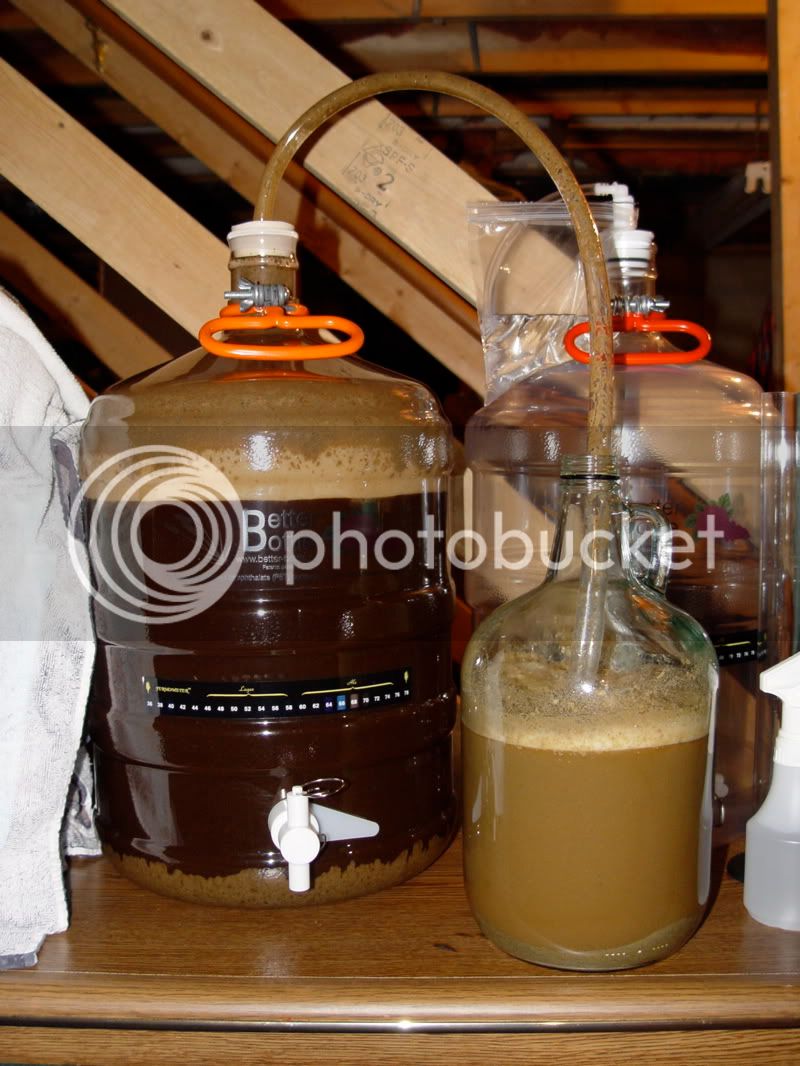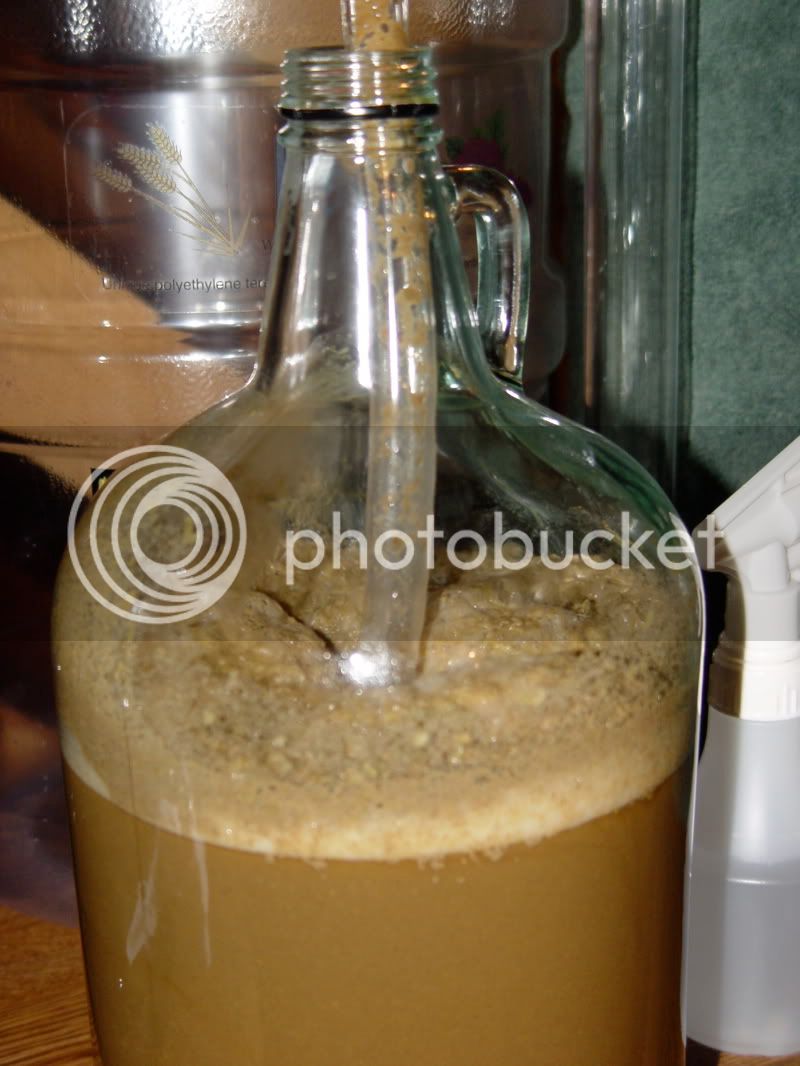I was reading this the other day, and it seemed there was a bit of confusion about yeast washing, so I took some pics of the process I used for some White Labs WLP029 German Ale/Kolsch yeast. Sterilization is KEY! I use StarSan primarily, wear rubber gloves, flame the mouths of all glass containers, and avoid breathing directly into or onto any of the equipment. Here goes:
First I harvested some of the yeast/trub cake at the bottom of the primary fermenter, put it into a sterile White Labs vial, and let it settle.
Then I made a one cup starter in a 1L Erlenmeyer flask with 1 oz of light DME and 1/4 tsp of ID Carlson's Yeast Energizer (boiled and cooled). I shook the top third of the harvest back into solution, trying to avoid disturbing the coagulated protein mass at the bottom. I pitched that top third into my 1 cup starter and placed it on my
stirplate overnight.
I stepped the starter up to 3 cups by adding 2 cups of water boiled with 2 oz of light DME and 1/2 tsp of the yeast nutrient. The solution remained on the
stirplate for another 2 days before I cooled it in the refrigerator and let it settle.
I poured the liquid off, leaving the "washed" yeast at the bottom of the flask.
In order to easily pour the yeast, I added just a little bit of sterilized (boiled and cooled) water and swirled the flask. I wound up with two vials like this:
Hope this helps clear up the process. Sorry if that was a bit of a long post.






































![Craft A Brew - Safale S-04 Dry Yeast - Fermentis - English Ale Dry Yeast - For English and American Ales and Hard Apple Ciders - Ingredients for Home Brewing - Beer Making Supplies - [1 Pack]](https://m.media-amazon.com/images/I/41fVGNh6JfL._SL500_.jpg)
















